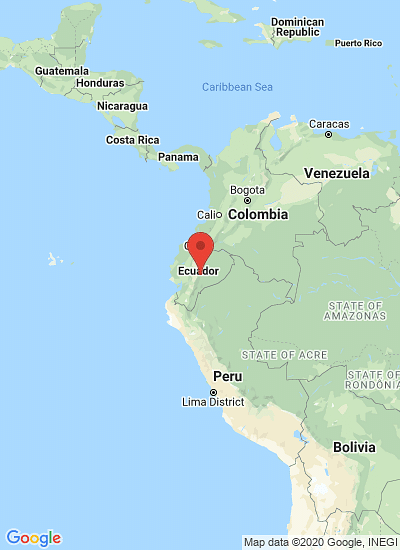Shankar Kaji Shakya, a graduate student and research fellow from the University of Florida (UF), recently visited the office of the International Potato Center (CIP) in Quito, Ecuador to discuss the characteristics of late blight in the Andes with CIP scientists. A native of Nepal, Shakya is interested in finding solutions for controlling Phytophtora infestans, the pathogen that causes potato late blight, in the context of changing climate conditions.
UF and CIP are collaborating on research to better understand and prioritize climate change adaptation needs for food security in the Andes. This includes working towards the development of a late blight model that takes oscillating temperatures into consideration, in order to predict the pathogen’s development under climate change scenarios. The ultimate objective is to integrate a late blight model with a potato growth model to calculate the likely outcomes under changing climate scenarios.
Shakya believes that changes in temperature amplitude will be more important in the future than changes in average temperatures. As part of his Masters of Science thesis at UF, he has run growth chamber experiments with P. infestans. He spent December 14-23 at CIP-Ecuador learning to run the late blight model LB2004, which was developed at Cornell University and recently modified by CIP scientist Jorge Andrade-Piedra.
“No research can be done without looking into the data, so I am here to collect late blight severity and weather data that can be used for my own model calibration and validation, and then take the available datasets to the University of Florida for further research”, Shakya said.
After presenting his thesis project to the CIP team, including a draft of a paper titled “Diurnal oscillations moderate temperature effects on epidemic components to Phytophtora infestans”, Shakya worked on the LB2004 model with Jorge Andrade, focusing on the technical aspects of the model, the temperature derived functions and some predefined rate parameters.
He then met with late blight epidemiologist Peter Kromann and plant pathologist Arturo Taipe to learn more about late blight epidemics in the highlands of Ecuador, which are entirely different from other places. “In the highlands, there is a spore shower year around, and disease progression is not usually through the development of foci”, Shakya explained, “so removing the potato plants around infected plants is not going to control or even reduce the rate of an epidemic. Epidemics in highlands are more determined by rainfall.”
Peter Kromann and Arturo Taipe have been studying the timing and number of fungicide applications during a season in an attempt to validate a locally-developed spray model. They are also testing potato cultivars against Phytophtora infestans and found that native cultivars are more susceptible to late blight.
“Mathematical tools are important in understanding the likely output, and complex problems can be resolved using mathematics. I see a huge amount of possibilities for epidemiological work in Nepal, which could include isolation and characterization of P. infestans, validation of the LB 2004 model in the Nepalese context, disease forecasting, varietal testing and fungicide testing,” said Shakya, who intends to do his PhD research on potatoes and late blight in Nepal. “I believe this visit has also opened avenues for further research and collaboration between CIP and UF.”
Understanding the threat of late blight under climate change, from Ecuador to Nepal

Like to receive news like this by email? Join and Subscribe!
Join Our Telegram Channel for regular updates!
Highlighted Company
Sponsored Content
Sponsored Content
Sponsored Content
Sponsored Content
Sponsored Content









